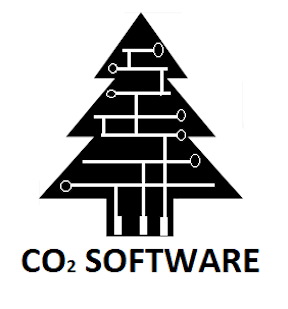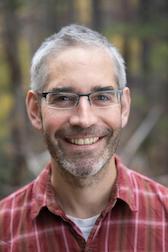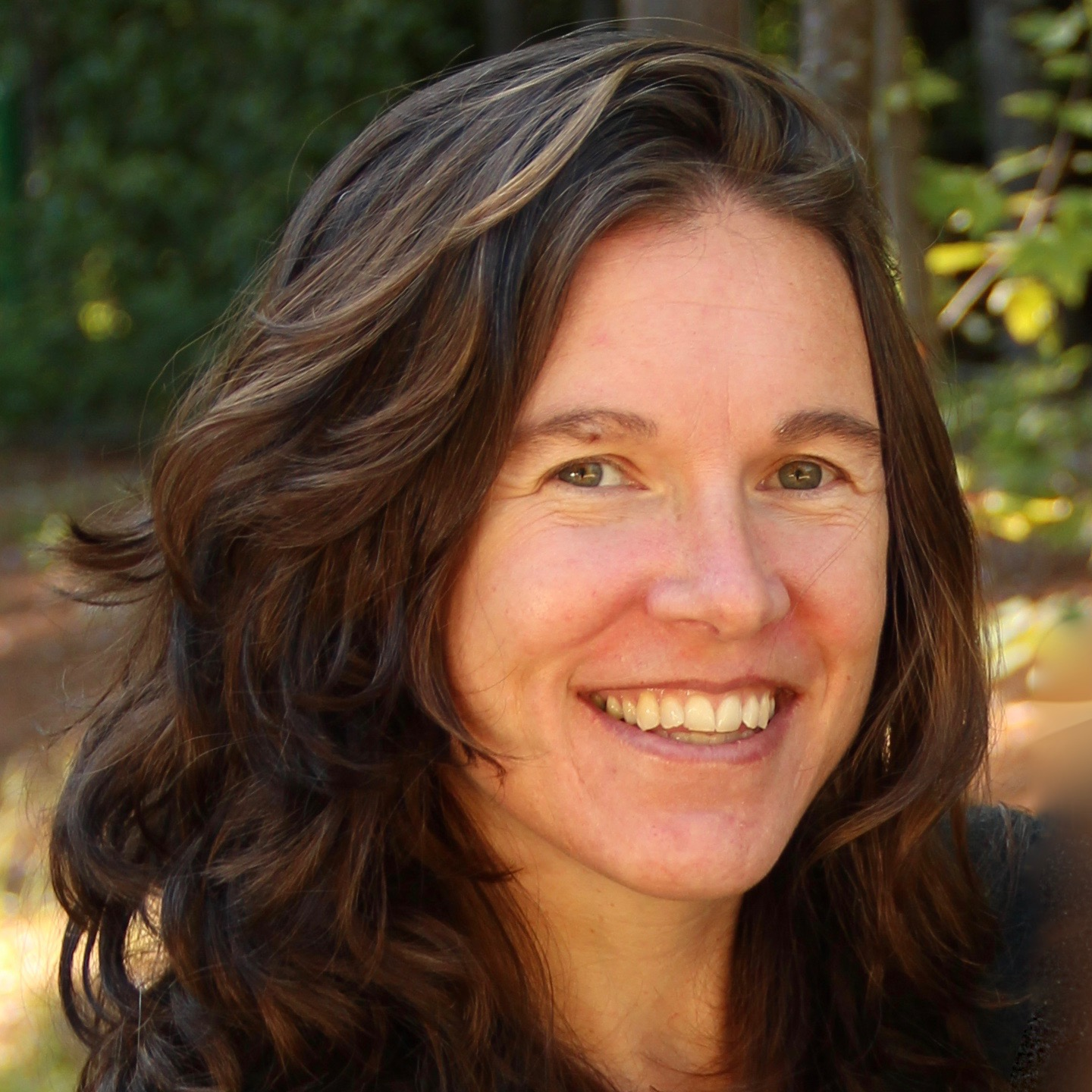What Is CO2 Software
 CO2 Software is a team of students part of the Computer Science program at Northern Arizona
University. The team consist of four members who have been assigned the task of developing a new
mobile application to be used by the Richardson-Carbone Ecology
Lab in their data collection process. Currently, the team is
finalizing development of their new system, and will present it
at the Northern Arizona University Undergraduate Symposium on
Friday, April 27th.
CO2 Software is a team of students part of the Computer Science program at Northern Arizona
University. The team consist of four members who have been assigned the task of developing a new
mobile application to be used by the Richardson-Carbone Ecology
Lab in their data collection process. Currently, the team is
finalizing development of their new system, and will present it
at the Northern Arizona University Undergraduate Symposium on
Friday, April 27th.
The Team
James Beasley
Project Lead / Programmer

As the team lead, it is James' responsibility to handle the delegation of tasks, and communication with the project sponsors. As a programmer, he has been responsible for the utilization of the Android GraphView library, and USBSerial library, as well as ensuring the application properly communicates with the gas analyzer, and records data in the proper format.
Andrew Greene
Programmer

As a programmer, Andrew has been responsible for the application's collection of metadata, as well as integration of all the various Android technologies related to the metadata, such as camera, GPS, and text field autofilling. Andrew's main contribution to the application can be seen on the metadata screen.
Samuel Beals
Programmer

As a programmer, Samuel has been responsible for the application's file input and output. His work has focused on presenting the user with a way to quickly and easily perform various actions on saved files such as viewing, deleting, filtering, and emailing. Samuel's main contribution to the application can be seen on the file directory screen.
Joseph Kelroy
Recorder / Programmer

As recorder, Joseph has been responsible for taking detailed and accurate notes at each meeting with the project sponsors, and later distributing those notes to the rest of the team. As a programmer, he has been responsible for the display of previously recorded data sets in the application. Joseph's main contribution to the application can be seen on the view screen.
Contact Us!
All questions pertaining to the team and to development of our current product can be directed to James Beasley.
Email: JPB249@nau.edu
Phone: 480-316-2366
Our Sponsors
About Dr. Richardson
 Dr. Richardson is an ecologist whose research addresses the impacts of global change on terrestrial ecosystems, and the feedbacks between terrestrial ecosystems and the atmosphere and climate system.
Richardson’s research focuses on (1) the exchanges of carbon, water, and energy between the land surface and the atmosphere; (2) phenology, or the seasonality of vegetation activity in different ecosystems, and the factors that drive this seasonality; (3) carbon allocation in trees, and basic questions related to tree physiology.
Dr. Richardson is an ecologist whose research addresses the impacts of global change on terrestrial ecosystems, and the feedbacks between terrestrial ecosystems and the atmosphere and climate system.
Richardson’s research focuses on (1) the exchanges of carbon, water, and energy between the land surface and the atmosphere; (2) phenology, or the seasonality of vegetation activity in different ecosystems, and the factors that drive this seasonality; (3) carbon allocation in trees, and basic questions related to tree physiology.
Richardson is PI of the PhenoCam network, a continental-scale phenological observatory that uses digital camera imagery to track, in near real time, the phenology of diverse ecosystems across North America. In collaboration with David Hollinger (USDA Forest Service), Richardson has been jointly responsible for running the AmeriFlux tower at the Bartlett Experimental Forest (New Hampshire) since 2004. Richardson is also actively involved in research projects at the Howland Forest, Maine; the Niwot Ridge AmeriFlux site in Colorado; the SPRUCE facility in northern Minnesota; and the Harvard Forest, Massachusetts. Richardson has been identified as a Highly Cited Researcher in both Environment/Ecology and Agricultural Sciences.
Research Statement
Human activities are rapidly transforming the Earth’s land, atmosphere, and oceans. It is widely acknowledged that this global change—examples of which include increasing atmospheric greenhouse gases, more frequent and severe extreme weather events, ocean acidification, losses of critically important biodiversity, naturalization of exotic species, and accelerating rates of deforestation and habitat fragmentation—threatens the capacity of our planet to support life. But, major knowledge gaps hinder our ability to accurately predict the complex interactions that will determine how ecosystems respond to, and also influence, future environmental change. Thus, improved understanding of how global change alters ecosystem health and productivity is critical for sustainable management of the Earth’s resources.
Climate change is one of the more prominent examples of global change, and is arguably one of the most important issues facing human society today. Global temperatures rose by about 1°C during the 20th century. While this is small relative to day-to-day and seasonal variation in air temperature, there is substantial evidence that rising temperatures and concurrent shifts in precipitation regimes are affecting the distribution and abundance of many plant (and animal) species. As levels of atmospheric CO2 continue to rise, it is highly likely that additional warming on the order of 1–4°C will occur by the end of the 21st century. This has important implications for the ecology and biology of individual species, for how ecosystems work, and also for the services that ecosystems provide to human societies.
As a global change ecologist, the over-arching question that motivates me is, “How does global change affect the structure and function of terrestrial ecosystems, as well as feedbacks between these ecosystems and the larger Earth system?” I address this question using tools from ecophysiology and ecosystem ecology, biogeochemistry and process-based modeling, biometeorology and atmospheric science, and applied mathematics, statistics, and computer science. I study the underlying processes at spatial scales from organs to ecosystems, and temporal scales from minutes to decades. I combine in-situ field studies and experiments, long-term observational data, and quantitative laboratory analyses, to understand processes and investigate mechanisms and drivers. I strive to develop new theory, which I then incorporate into quantitative models, and tested against observations.
I have long been fascinated by the majestic beauty of trees, and much of my research is focused on forested ecosystems. Forests play a vital role in the Earth System. They cover about one-third of the Earth’s land surface area, and are critically important in the global cycles of carbon and water. Forests are regulators of feedbacks between the biosphere and the atmosphere, particularly with respect to levels of atmospheric CO2. Forest photosynthesis accounts for roughly half of the world’s terrestrial productivity, and global forest carbon stocks are comparable in magnitude to the 750 Pg carbon in the atmosphere. Finally, forests provide a range of goods and services on which human societies are reliant, including wood and fiber, food, and fuel. From an applied perspective, research into the effects of global change on forest ecosystems has far-reaching social and economic policy implications.
Education
Ph.D., Forestry and Environmental Studies, Yale University, New Haven CT
M.F., Forestry, Yale University, New Haven CT
A.B., Economics, Princeton University, Princeton NJ
About Dr. Carbone
 Dr. Carbone is interested in the response of terrestrial ecosystems to environmental change, and their role in the Earth’s climate system. Her research focuses on C cycling in plants and soils, with expertise in the application of isotopes as tracers of processes. Her overarching research question is: what is the fate of C in terrestrial ecosystems? This topic spans temporal scales such as whether newly assimilated C is quickly returned to the atmosphere by plant metabolism or sequestered as soil organic matter for centuries to millennia. It also covers spatial scales from the study of microbial processes to plant C allocation to landscape-scale climatic controls on ecosystem function.
Dr. Carbone is interested in the response of terrestrial ecosystems to environmental change, and their role in the Earth’s climate system. Her research focuses on C cycling in plants and soils, with expertise in the application of isotopes as tracers of processes. Her overarching research question is: what is the fate of C in terrestrial ecosystems? This topic spans temporal scales such as whether newly assimilated C is quickly returned to the atmosphere by plant metabolism or sequestered as soil organic matter for centuries to millennia. It also covers spatial scales from the study of microbial processes to plant C allocation to landscape-scale climatic controls on ecosystem function.
Research Statement
We are interested in the response of terrestrial ecosystems to environmental change, and their role in the Earth’s climate system. This is important because as atmospheric CO2 concentrations increase, and temperature and precipitation patterns are altered across much of Earth, we lack the ability to predict if terrestrial ecosystems will be a source or sink of C to the atmosphere. Our research focuses on C cycling in plants and soils, with expertise in the application of isotopes as tracers of processes.
Our overarching research question is: what is the fate of C in terrestrial ecosystems? This topic spans temporal scales such as whether newly assimilated C is quickly returned to the atmosphere by plant metabolism or sequestered as soil organic matter for centuries to millennia. This topic also covers spatial scales from the study of microbial processes to plant C allocation to landscape-scale climatic controls on ecosystem function.
We combine field measurements, laboratory work, and computational analyses of large continuous datasets. Currently, there are three major themes in our research: (1) understanding plant C allocation patterns, (2) linking hydrologic controls and ecosystem C cycling, (3) determining mechanistic controls on belowground CO2 fluxes.
A methodological tool that is used in most of our research is the application of stable and radioactive isotopic tracers, especially radiocarbon (14C) measured by accelerator mass spectrometry (AMS). In particular, 14C is a novel and powerful tool to study terrestrial C cycling on timescales of hours to millennia. It can be used to determine the age of C, the mean residence time or turnover of C pools, and it can also be used as a source tracer. We use natural abundance, bomb spike, and tracer levels of 14C in our research.
Education
Ph.D. Earth System Science, University of California, Irvine
B.A. Earth & Environmental Science, Cum Laude, Wesleyan University, Connecticut
Abroad at James Cook University, Townsville, Queensland, Australia
Our Project Mentor
About M.Sc. Ana Paula Chaves
 I completed the Graduate Program in Computer Science at Department of Informatics at the State University of Maringa in 2009, advised by Professor Ph. D. Elisa Hatsue Moriya Huzita. Currently, I am a Ph.D. student at School of Informatics, Computing, and Cyber Systems at Northern Arizona University, advised by Professor Ph.D. Marco Aurelio Gerosa. At this moment, I am away from my duties as a Faculty at the Federal University of Technology - Paraná, Campus Campo Mourão, Brazil, where I work since 2010 in the Academic Department of Computing, and my return to that position is planned for 2021. I am also a member of the Research Group on Information Systems from State University of Maringá, and the Software Engineering and Collaborative Systems Research Lab from the Federal University of Technology - Paraná, Campus Campo Mourão.
I completed the Graduate Program in Computer Science at Department of Informatics at the State University of Maringa in 2009, advised by Professor Ph. D. Elisa Hatsue Moriya Huzita. Currently, I am a Ph.D. student at School of Informatics, Computing, and Cyber Systems at Northern Arizona University, advised by Professor Ph.D. Marco Aurelio Gerosa. At this moment, I am away from my duties as a Faculty at the Federal University of Technology - Paraná, Campus Campo Mourão, Brazil, where I work since 2010 in the Academic Department of Computing, and my return to that position is planned for 2021. I am also a member of the Research Group on Information Systems from State University of Maringá, and the Software Engineering and Collaborative Systems Research Lab from the Federal University of Technology - Paraná, Campus Campo Mourão.
My research area involves Computer Supported Cooperative Work (CSCW), Human-Computer Interface (HCI) and Smart Cities domains, the last one focusing on mobility. Therefore, I am engaged in activities related to the empowerment of women in Computing and Technology fields. I am interested in Human Aspects of Smart Cities and Mobility, and Interaction Design for Conversational Agents.